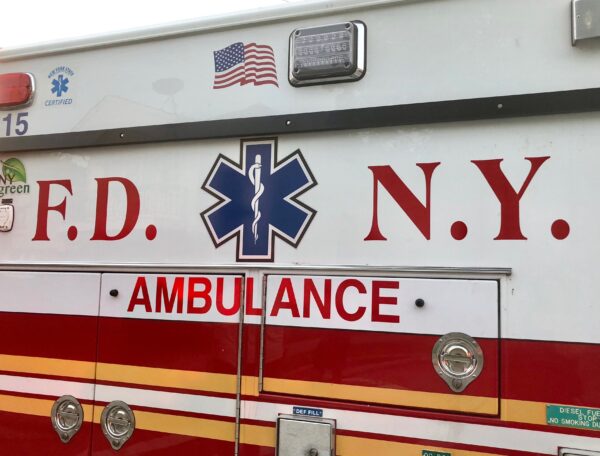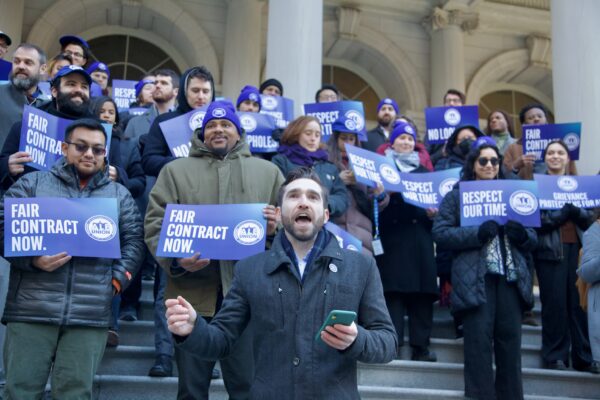June 23, 2014
By Joe Maniscalco
New York, NY – Mayor Bill de Blasio's plan to build or preserve 200,000 units of affordable housing over the next decade has officially been set into motion – but the question of whether or not the scheme will ultimately result in good construction jobs with pathways to real careers – or just more low-wage gigs that put construction workers at increased risk of injury or death, remains.
Close to 80 percent of the construction fatalities in New York City occur on non-union job sites where – in addition to substandard wages and non-existent benefits – untrained and largely poor immigrant workers routinely feel pressured to take shortcuts on the job.
The economic costs associated with the ensuing accidents – not to mention the individual pain and suffering – are myriad and far reaching. Even with existing laws in place, construction continues to be the single most dangerous industry in New York City – and it's been that way for a long time.
Despite that, de Blasio and Deputy Mayor for Housing and Economic Development Alicia Glen, are hardly rolling out the red carpet for the city's Building Trades – and are instead wrangling with organized labor over the cheapest way to execute the city's affordable housing plan.
Those concerned with the health and safety of workers think that's a mistake.
"If you're looking at a progressive housing plan, it has to include creating good jobs for New Yorkers, says Charlene Obernauer, executive director, New York Committee for Occupational Safety & Health [NYCOSH]. ”From our perspective, any plan that talks about affordable housing, needs to also think about union construction."
Organized labor's training and apprenticeship programs are unmatched, and widely considered the gold standard in providing both expertise and safety.
"What you see time and time again, is that if you're willing to invest in training and apprenticeships with strong health and safety programs, you're going to have a safer experience on the job," Obernaur says. "If you're not willing to invest in those programs, then workers are going to be working without the necessary protections that they need – and you're going to have a problem."
NYCOSH's executive director sees dangerous construction sites virtually every day.
"I can't even tell you how many times I'm walking around places in New York City and I see a scaffold that is not planked properly. Or workers who aren't strapped into anything, or without harnesses on," Obernauer says. "It's so much more common than people think. And it's so much more dangerous than the workers think."
With all of the talk surrounding de Blasio's affordable housing plan presently going on behind closed doors, health and safety advocates fear that the focus on workers is being lost.
"Often times in the conversation, you get the issue of union versus non-union," Obernauer says. "But you don't often have the conversation of safe versus non-safe. And that's what we need to focus on: How do we create safer jobs? Nobody wants to say that New York City has a high fatality rate in construction – but at the same time, you need to be willing to invest in good jobs in order to prevent fatalities from occurring."
Last week, the New York City Housing Development Corporation okayed financing for 2,226 new and existing units of housing located in Manhattan, the Bronx and Brooklyn.
In describing the push for his affordable housing plan, Mayor de Blasio said that the city's economic inequality has created a "painful reality where more and more New Yorkers are spending more and more to cover their housing costs, and entire neighborhoods have lost their affordability.”
But others argue that failing to fully embrace union labor not only endangers workers, it also undermines the mayor's own efforts to combat rising economic inequality.
"While [affordable housing] is a critical issue for so many New Yorkers, it's also critical that you are providing adequate wages for people that are building the affordable housing," Obernauer says. "No matter how cheap the rent is – if people are not getting a living wage, they're not going to be able to live there anyway."
At the end of day, NYCOSH's executive director says a truly progressive affordable housing plan simply must include the creation of good jobs for New Yorkers.
"If it doesn't, it's really not a comprehensive progressive plan," Obernauer says.



